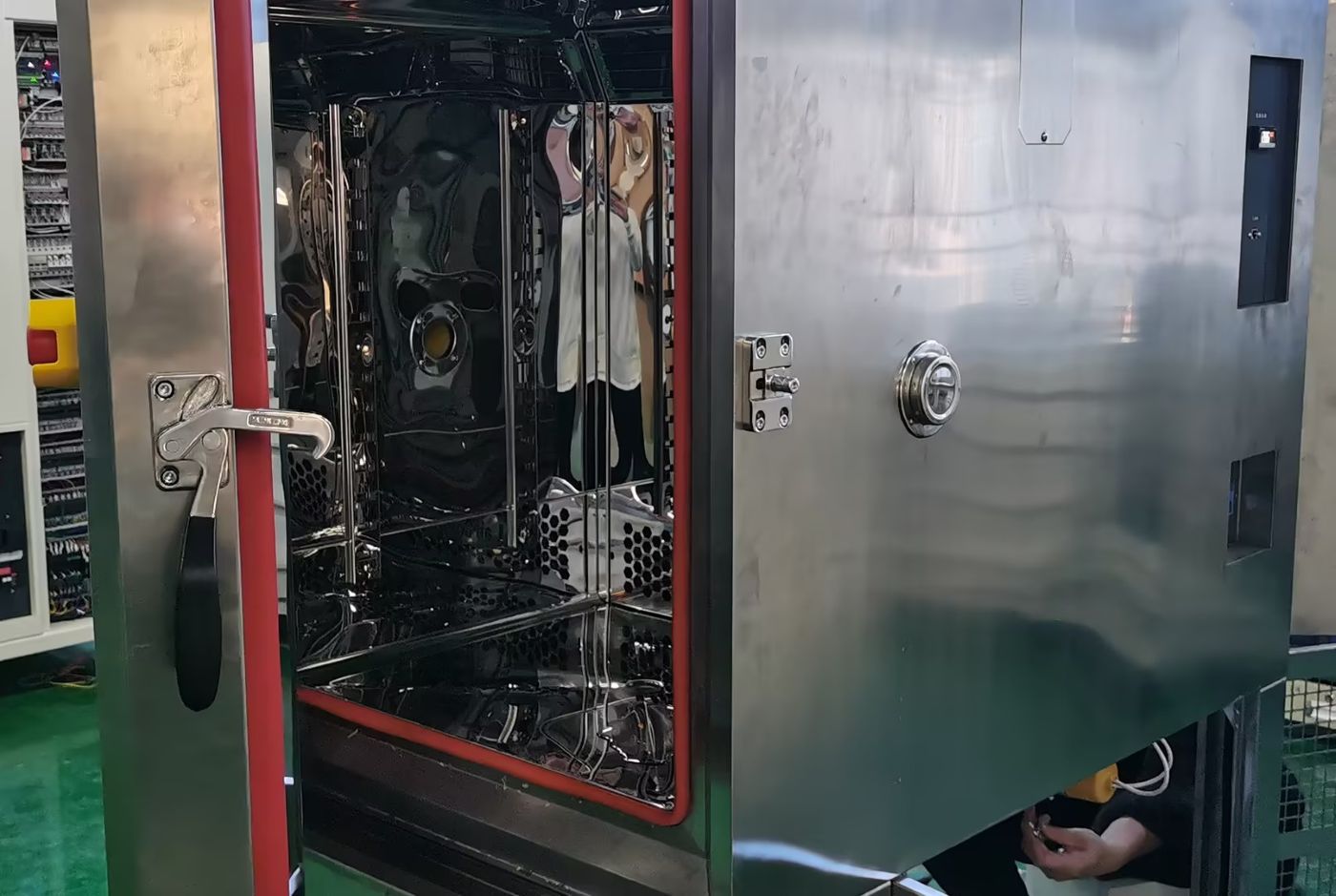1.Equipment Overview
The Humidity & Temperature Test Chamber, also known as an Environmental Simulation Testing Apparatus, is a precision instrument requiring strict adherence to operational protocols. As a Class II electrical device compliant with IEC 61010-1 safety standards, its reliability (±0.5°C temperature stability), precision (±2% RH humidity accuracy), and operational stability are critical for obtaining ISO/IEC 17025 compliant test results.
2.Pre-Operation Safety Protocols
2.1 Electrical Requirements
- Power supply: 220V AC ±10%, 50/60Hz with independent grounding (ground resistance ≤4Ω)
- Install emergency stop circuit and overcurrent protection (recommended 125% of rated current)
- Implement RCD (Residual Current Device) with tripping current ≤30mA
2.2 Installation Specifications
- Clearance requirements:
Rear: ≥500mm
Lateral: ≥300mm
Vertical: ≥800mm
- Ambient conditions:
Temperature: 15-35°C
Humidity: ≤85% RH (non-condensing)
Atmospheric pressure: 86-106kPa

3.Operational Constraints
3.1 Prohibited Environments
- Explosive atmospheres (ATEX Zone 0/20 prohibited)
- Corrosive environments (HCl concentration >1ppm)
- High particulate areas (PM2.5 >150μg/m³)
- Strong electromagnetic fields (>3V/m at 10kHz-30MHz)
4.Commissioning Procedures
4.1 Pre-Start Checklist
- Verify chamber integrity (structural deformation ≤0.2mm/m)
- Confirm PT100 sensor calibration validity (NIST traceable)
- Check refrigerant levels (R404A ≥85% of nominal charge)
- Validate drainage system slope (≥3° gradient)
5.Operational Guidelines
5.1 Parameter Setting
- Temperature range: -70°C to +150°C (gradient ≤3°C/min)
- Humidity range: 20% RH to 98% RH (dew point monitoring required >85% RH)
- Program steps: ≤120 segments with ramp soak control
5.2 Safety Interlocks
- Door-open shutdown (activation within 0.5s)
- Over-temperature protection (dual redundant sensors)
- Humidity sensor failure detection (auto-dry mode activation)
6.Maintenance Protocol
6.1 Daily Maintenance
- Condenser coil cleaning (compressed air 0.3-0.5MPa)
- Water resistivity check (≥1MΩ·cm)
- Door seal inspection (leak rate ≤0.5% vol/h)
6.2 Periodic Maintenance
- Compressor oil analysis (every 2,000 hours)
- Refrigerant circuit pressure test (annual)
- Calibration cycle:
Temperature: ±0.3°C (annual)
Humidity: ±1.5% RH (biannual)
7.Failure Response Matrix
| Symptom Priority | Priority | Immediate Action | Technical Response |
| Uncontrolled heating | P1 | Activate emergency stop | Check SSR operation (Vf <1.5V) |
| Humidity oscillation | P2 | Initiate auto-dry cycle | Verify dew point sensor calibration |
| Condenser frost | P3 | Reduce humidity setpoint | Check expansion valve (ΔT 5-8°C) |
| Water level alarm | P2 | Refill with DI water | Conduct float switch resistance test |
8.Decommissioning & Disposal
- Refrigerant recovery per EPA 608 regulations
- PCB disposal compliant with RoHS Directive 2011/65/EU
- Steel components recycling (≥95% recovery rate)
9.Compliance Standards
- Safety: UL 61010-2-011, EN 60204-1
- EMC: FCC Part 15 Subpart B, EN 55011
- Performance: ASTM D4332, IEC 60068-3-5
